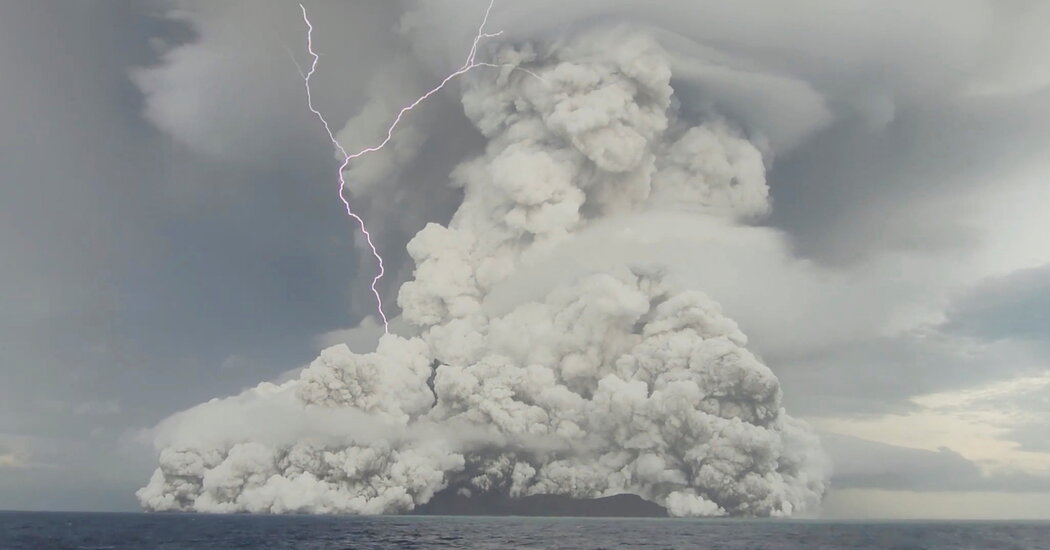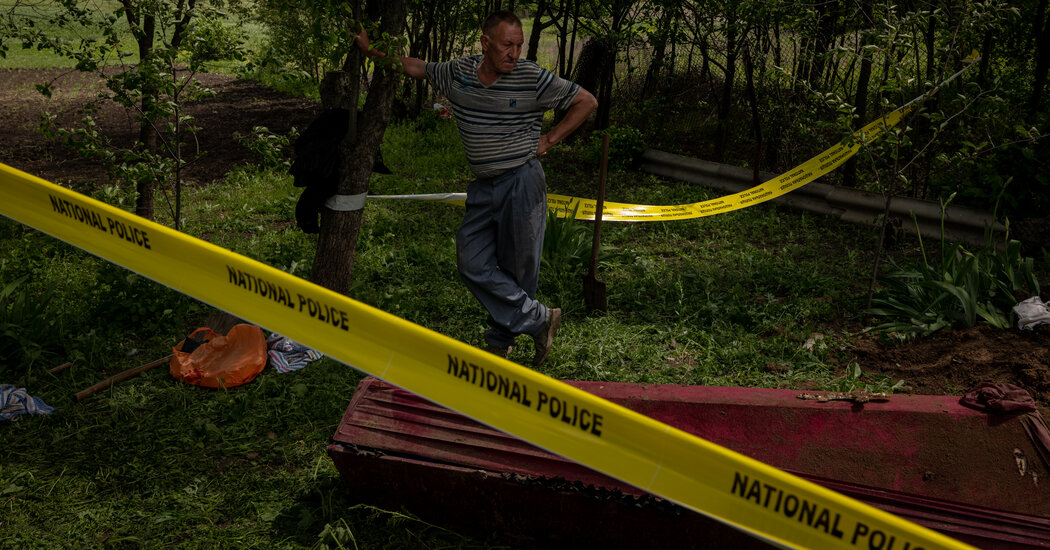
While residents of Tonga struggle to recover from a devastating volcanic explosion that smothered the Pacific island nation with ash and swamped it with water, scientists are trying to better understand the global effects of the eruption.
They already know the answer to one crucial question: Although it appeared to be the largest eruption in the world in three decades, the explosion of the Hunga volcano on Saturday will very likely not have a temporary cooling effect on the global climate, as some past enormous eruptions have.
But in the aftermath of the event, there may be short-term effects on weather in parts of the world and possibly minor disruptions in radio transmissions, including those used by global positioning systems.
The shock wave produced by the explosion, as well as the unusual nature of the tsunamis it generated, will have scientists studying the event for years. Tsunamis were detected not just in the Pacific, but in the Atlantic, Caribbean and Mediterranean as well.
“Not that we weren’t aware of volcanic explosions and tsunamis,” said Lori Dengler, an emeritus professor of geophysics at Humboldt State University in California. “But to witness it with the modern array of instruments we have is truly unprecedented.”
The explosion of the underwater volcano, which is formally known as Hunga Tonga-Hunga-Haʻapai, rained hazardous ash over the region, including the Tongan capital, Nuku’alofa, about 40 miles south. The capital also experienced a four-foot tsunami and higher wave heights were reported elsewhere.
The government called the eruption an “unprecedented disaster,” although the full scope of the damage has been difficult to determine because the explosion severed undersea telecommunications cables and ash has forced Tonga’s airports to shut down.
Beyond Tonga, though, the enormity of the explosion was readily apparent. Satellite photos showed a cloud of dirt, rock, volcanic gases and water vapor several hundred miles in diameter, and a narrower plume of gas and debris soared nearly 20 miles into the atmosphere.
Some volcanologists drew comparisons to the catastrophic explosion of Krakatau in Indonesia in 1883 and to the most recent huge eruption, of Mount Pinatubo in the Philippines, in 1991.
Pinatubo erupted for several days, sending about 20 million tons of sulfur dioxide gas into the stratosphere, or upper atmosphere. There, the gas combined with water to create aerosol particles that reflected and scattered some of the sun’s rays, keeping them from hitting the surface.
That had the effect of cooling the atmosphere by about 1 degree Fahrenheit (about half a degree Celsius) for several years. (It is also the mechanism of a controversial form of geoengineering: using planes or other means to continuously inject sulfur dioxide into the stratosphere to intentionally cool the planet.)
The Hunga eruption “was matching the power of Pinatubo at its peak,” said Shane Cronin, a volcanologist at the University of Auckland in New Zealand who has studied earlier eruptions at the volcano.
But the Hunga eruption lasted only about 10 minutes, and satellite sensors in the days that followed measured about 400,000 tons of sulfur dioxide reaching the stratosphere. “The amount of SO2 released is much, much smaller than, say, Mount Pinatubo,” said Michael Manga, an earth sciences professor at the University of California, Berkeley.
So unless the Hunga eruption resumes and continues at a similarly strong level, which is considered unlikely, it won’t have a global cooling effect.
Dr. Cronin said the power of the eruption was in part related to its location, about 500 feet underwater. When superhot molten rock, or magma, hit seawater, the water instantly flashed into steam, expanding the explosion many times over. Had it been much deeper, water pressure would have damped the explosion.
The shallower depth created perfect “almost Goldilocks” conditions, he said, to supercharge the explosion.
The blast produced a shock wave in the atmosphere that was one of the most extraordinary ever detected, said Corwin Wright, an atmospheric physicist at the University of Bath in England. Satellite readings showed that the wave reached far beyond the stratosphere, as high as 60 miles up, and propagated around the world at more than 600 miles an hour.
“We’re seeing a really big wave, the biggest we’ve ever seen in the data we’ve been using for 20 years,” Dr. Wright said. “We’ve never seen anything really that covers the whole Earth like this, and certainly not from a volcano.”
The wave resulted when the force of the blast displaced huge amounts of air outward and upward, high into the atmosphere. But then gravity pulled it down. It then rose up again, and this up-down oscillation continued, creating a wave of alternating high and low pressure that moved outward from the blast source.
Dr. Wright said that although the wave occurred high in the atmosphere, it may potentially have a short-term effect on weather patterns closer to the surface, perhaps indirectly by affecting the jet stream.
“We don’t quite know,” he said. “We’re looking to see what happens over the next few days. It could just sort of ripple through and not interact.”
Dr. Wright said that because the wave was so high, it could also potentially have a slight effect on radio transmissions and signals from global positioning systems satellites.
The atmospheric pressure wave may have also played a role in the unusual tsunamis that occurred.
Tsunamis are generated by the rapid displacement of water, usually by the movement of rock and soil. Large underwater faults can generate tsunamis when they move in an earthquake.
Volcanoes can cause tsunamis as well. In this case, the underwater blast, and the collapse of the volcano’s crater, may have caused the displacement. Or one flank of the volcano may have become unstable and collapsed, with the same result.
But that would only account for the local tsunami that inundated Tonga, scientists said. Ordinarily, said Gerard Fryer, an affiliate researcher at the University of Hawaii at Manoa who formerly worked at the Pacific Tsunami Warning Center, “you’d expect that energy to decay away with distance.”
But this event generated tsunamis of roughly the same size as the local one, and over many hours, in Japan, Chile and the West Coast of the United States, and eventually generated small tsunamis in other basins elsewhere around the world.
That’s a sign that as it traveled through the atmosphere, the pressure wave may have had an effect on the ocean, causing it to oscillate as well.
It will take weeks or months of analyzing data to determine if that’s what happened, but some researchers said it was a likely explanation.
“We know that the atmosphere and the ocean are coupled,” said Dr. Dengler. “And we see the tsunami in the Atlantic Ocean. It didn’t go around the tip of South America to get there.”
“The evidence is very clear that the pressure wave played a role. The question is how big a part.”




